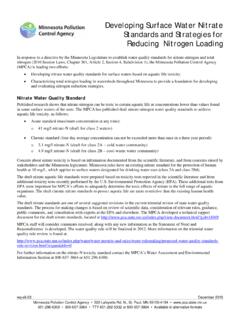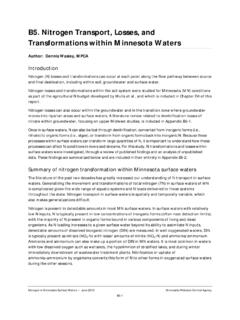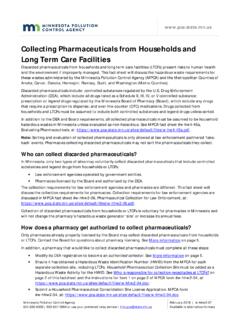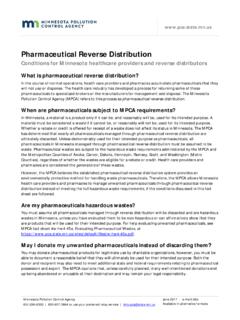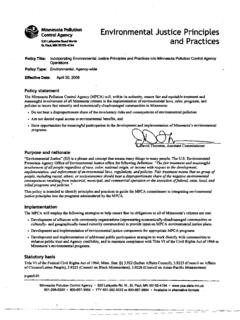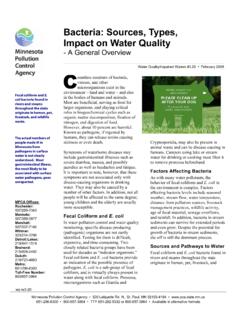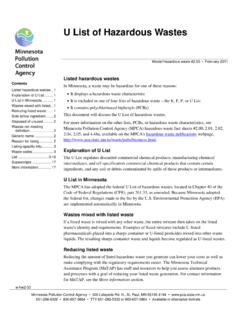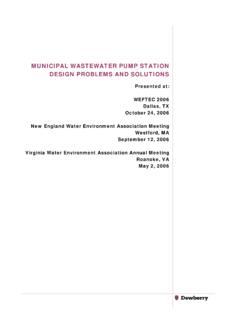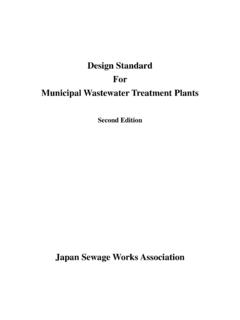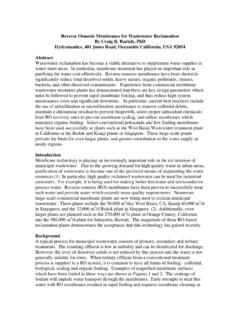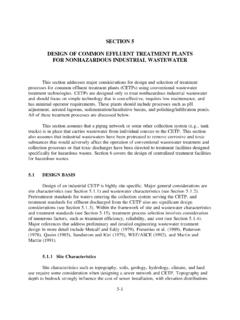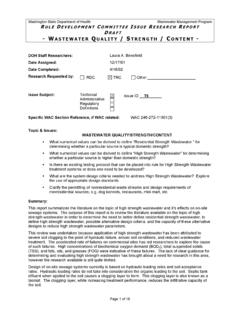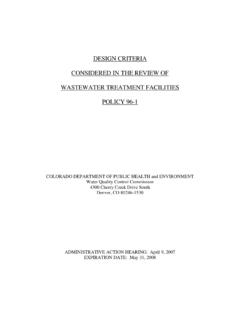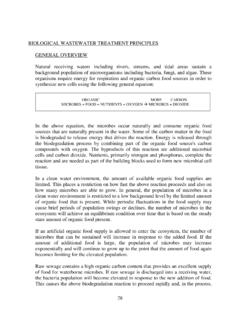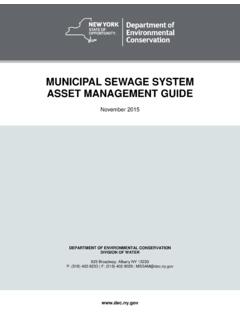Transcription of Analyzing Alternatives for Sulfate Treatment in Municipal ...
1 Analyzing Alternatives for Sulfate Treatment in Municipal wastewater Prepared for: Minnesota Pollution Control Agency May 1, 2018 Prepared by: Bolton & Menk, Inc. and Barr Engineering Company wq-rule4-15ppP:\Mpls\23 MN\62\23621245 MPCA POTW Sulfate Treatment \WorkFiles\Report\ Analyzing Alternatives for Sulfate Treatment in Municipal wastewater -Part 1 Final !"#$%&'( " )* % ( !") +$( " )* % H:\MNPCA_ST_MN\M21113135\3_Design\C_Repo rts\Final Draft\Part i Certifications I hereby certify that this plan, specification, or report was prepared by me or under my direct supervision and that I am a duly Licensed Professional Engineer under the laws of the State of Minnesota.
2 Responsible for Part 2 of this Report. Herman A. Dharmarajah PE #: 18256 Date: May 1, 2018 I hereby certify that this plan, specification, or report was prepared by me or under my direct supervision and that I am a duly Licensed Professional Engineer under the laws of the State of Minnesota. Responsible for Part 2 of this Report. Adrian T. Hanson PE #: 16540 Date: May 1, 2018 H:\MNPCA_ST_MN\M21113135\3_Design\C_Repo rts\Final Draft\ Abstract The current revision of Minnesota s surface water quality standard for Sulfate may result in some Municipal wastewater Treatment plants having to reduce the Sulfate in their discharge.
3 This two-part study evaluated options for Sulfate Treatment and examined the implications of those Treatment options for typical Municipal wastewater Treatment plants in Minnesota. The first project activity reviewed and ranked 31 technologies for Sulfate removal based on effectiveness, operability/maintainability, cost, complexity of pre- and post- Treatment , and waste management requirements. The types of technologies reviewed included chemical precipitation, ion exchange, membrane separation, electrochemical, biological, and evaporative Treatment . The technology review indicated that reverse osmosis (RO) and nanofiltration (NF) are the most well-developed and effective Alternatives available for Sulfate removal at this time, despite the complexity and cost associated with final waste management.
4 The second part of the study examined the implementation of RO for Sulfate removal at Minnesota s Municipal wastewater Treatment plants in greater depth, using six hypothetical case studies covering a range of Treatment plant sizes and Sulfate Treatment goals typical for the state. The case studies considered the technical, operational, and economic issues associated with integration of RO into conventional Municipal Treatment systems. Sulfate Treatment using RO was found to be extremely expensive and operationally complex. The main driver of complexity and costs was membrane waste management, which in this study focused on mechanical evaporation and crystallization.
5 Due to the complexity of the processes, which differ significantly from those currently employed for conventional Municipal wastewater Treatment , increased staffing levels and operator training would be needed for successful implementation. RO and NF are effective in removing Sulfate from wastewater , but waste management challenges remain a barrier to implementation. Across all industries employing RO and NF, additional research and development are needed to create cost-effective, sustainable waste management Alternatives . 1 Executive Summary Introduction The State of Minnesota is currently revising the surface water quality standard of 10 mg/L.
6 A revised water quality standard may result in some Municipal wastewater Treatment plants (WWTPs) needing to reduce the concentration of Sulfate in their discharges. Historically, Municipal WWTPs have not been required to treat Sulfate to achieve compliance with a NPDES permit. This report presents the results of a study commissioned by the Minnesota Pollution Control Agency through funding from the Minnesota Environment and Natural Resources Trust Fund to assess the current technologies and tools available to Municipal WWTPs to reduce Sulfate concentrations in their discharges and identifies the challenges of meeting potential Sulfate limits in the future.
7 In Part 1 of the study (2017), a wide range of established and emerging Sulfate Treatment technologies from the Municipal and industrial sectors and source control options were reviewed, screened, and ranked to understand their advantages and disadvantages and to identify potentially feasible technologies currently available for Sulfate removal. Of the technologies reviewed, reverse osmosis (RO) and nanofiltration (NF), both membrane technologies, were identified as the most promising, well-established technologies for Sulfate removal. Part 1 also stated that further research and development on cost-effective means for managing the salt-laden, liquid waste generated by these processes is needed.
8 This liquid waste stream is called either concentrate or reject. The process and cost of managing this waste stream became a major part of Part 2. Part 2 (2018) examines the practical design, implementation considerations, and costs of select Treatment technologies for use in removing Sulfate in typical Municipal WWTPs. Six hypothetical case studies are presented that cover a broad range of Sulfate Treatment scenarios and Treatment plant The case studies include: biological wastewater Treatment plant costs, membrane Treatment costs, concentrate management costs, and if required, intermediate water Treatment with a second stage of membrane Treatment for concentrate minimization.
9 Technology Summary from Part 1 The screening process used in Part 1 was a three-step process that included: 1. Threshold screening based on the technology s degree of development and commercialization, and ability to achieve a threshold Sulfate removal performance; 2. Technology screening based on performance, cost, and other factors; and 3. Screening based on removal performance for other parameters of concern, such as nutrients, chloride, total dissolved solids, and mercury. The goal of the screening process was to understand the advantages and limitations of each Sulfate Treatment approach, and to identify the most feasible Treatment technologies for reducing Sulfate in Municipal wastewater effluent using a uniform scoring and ranking methodology.
10 2 Of the 31 technologies evaluated, 18 technologies were screened out, and 13 technologies were successful in the first level of screening and were then screened using these second level criteria. Second level assessment is based on: effectiveness, operability/maintainability, relative cost, degree/complexity of pre and post Treatment requirements, and management of Treatment residuals. The Treatment technologies that received the top ratings were reverse osmosis, and nano-filtration. These technologies scored highest in effectiveness and operability/maintainability, including cold weather performance.
